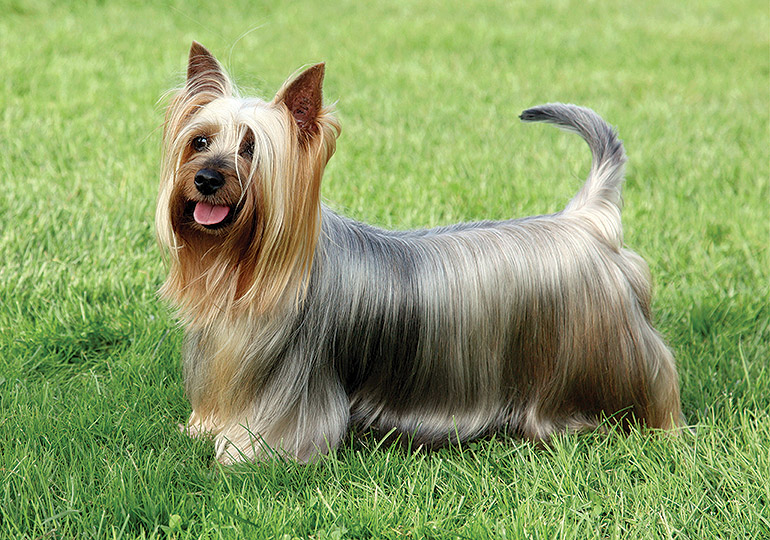
GROUP 1- TOYS
The evolution of the Australian Silky Terrier is shrouded in mystery because it’s early development was not chronicled accurately.
British migrants at the end of the 18th century probably brought with them a selection of early British Terrier types. Several of these were instrumental in developing the Australian Silky Terrier.
At a time when selective breeding was in its infancy, many of the early Terriers were considerably more alike than they are now, but it has been suggested that early Skye, Dandie Dinmont, Norwich, Border and Cairn Terriers were forefathers of the Silky. It is also thought that Toy breeds, such as the Yorkshire Terrier, Clydesdale or Paisley Terrier, which was known for its straight silky coat, were ancestors of the breed.
Its original popularity must be put down to the fact that a convenient-sized companion dog, which also had the determination of a Terrier, would have instant appeal to the early Australian urban dwellers. Now, despite its name, the Silky is placed in the Toy group.
The first Silky Terrier Club in NSW was formed in 1906. Sydney breeders decided to have their own standard and the breed became known as the Sydney Silky. In 1959, a committee of Kennel Club representatives from NSW and VIC met and, at last, breeders agreed on a national standard. The breed was then known as the Australian Silky Terrier.
Over the years Australian Silky Terrier breeders have progressed and developed to today’s standard. Today they have not only a few top Australian Silky Terriers, they claim to have the best in the world.
As well as having an intelligent expression, an Australian Silky Terrier must be capable of working and sound in every way. Originally, the Silky was bred to work as a hunter of domestic rodents and must, therefore, show no signs of weediness or nervousness.
In the show ring a Silky must display keen alertness, showing activity and interest in the proceedings, and should be quick, friendly and responsive to any stimulation.
The Australian Silky Terrier is a strong, healthy breed with few health problems. It can live for up to 15 years or more. Like most breeds, it may develop arthritis or cataracts in old age, but will otherwise live a long, healthy life if it is properly cared for.
While patella luxation (slipping kneecaps) isn’t such a problem in today’s generation of Australian Silky Terriers, it’s important to note that it is still known to occur in some dogs.
The Silky’s structure is moderate, medium and refined. It should be compact, displaying activity and strength in movement. The Australian Silky Terrier is a clean pointed dog with a straight, single, well-groomed body coat, which gives it a glamorous appearance.
The body is moderately low set, and the ribs should extend well back, giving a short, strong, balanced coupling. The backline is straight and the topline should be level.
All shades of blue and tan are acceptable in the coat, and the blue can range from pigeon-blue to slate-blue. A Silky is born black and tan, and should have a complete colour break by 18 months of age. Many breeders are happy to have a puppy hold its colour, as it is a good sign that the dog will eventually be a good blue.
The movement of the Silky should be free, light-footed, lively and straightforward. An easy, effortless gait with reach and drive is required, so it needs powerful, propelling hindquarters.
There should be no slackness in shoulder or elbow, no turning in or out of the feet.
The Silky Terrier's coat is highly susceptible to tangles and matting and requires daily brushing and combing. This breed requires a deep commitment from the owners. To keep the coat lustrous, regular shampooing is necessary. 1.
Words: Pat Scales
Image: Shutterstock.com
Now you know a little about the Australian Silky Terrier, you may think that this is the dog for you. Before you make a decision, please make contact with the breed club or your State controlling body for purebred dogs. They will be able to give you information about available puppies and also suggest dog shows where you can see the breed and speak to breeders. In this way you will gain a better perspective of the Australian Silky Terrier and its needs, and whether this breed would suit your lifestyle.